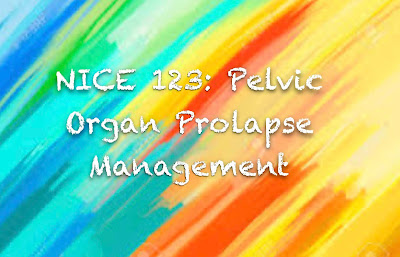This is the part 2 of summary of the NICE guideline “Urinary Incontinence & Pelvic Organ Prolapse in Women: Management” published in April 2019. As this is a long guideline, so it was decided to cover it in two posts. To access the part 1 of summary please Click Here
- This post #2 mainly focuses on the management of pelvic organ prolapse. It covers assessing pelvic organ prolapse (POP), non-surgical/surgical management of POP, surgery for women with both SUI & POP, assessing & managing complications associated with mesh surgery
- The post #1 of summary covered organization of specialist services, data collection on surgery, assessing urinary incontinence (UI), non-surgical management of UI and surgical management of stress urinary incontinence (SUI). Summary Part 1
- It is advised to read the original guideline to grasp the topic and to make sure no important point is missed
- The full guideline can be downloaded by clicking here: NG 123 Urinary Incontinence & POP in women: Management
- Some other relevant links of this topic are also provided at the end of this post
Kindly let me know if this post was helpful and suggestions to improve future posts are welcome.
Thanks
NICE 123 Pelvic Organ Prolapse in women: Management
Assessing Pelvic Organ Prolapse
- In Primary Care: women with symptoms or incidental findings of vaginal prolapse
- Take history → including prolapse symptoms, urinary, bowel & sexual function
- Examination → to rule out pelvic mass or other pathology / document presence of prolapse
- Discuss → woman’s treatment preferences & refer if needed
- In secondary Care: If referred due to unrelated condition with incidental symptoms /findings → Consider referral to prolapse expert clinician
- Women referred for specialist evaluation of vaginal prolapse → perform an examination to:
- Assess/ record presence & degree of prolapse of anterior, central & posterior vaginal compartments of pelvic floor, using POP-Q system
- Assess pelvic floor muscle activity
- Assess for vaginal atrophy
- Rule out pelvic mass or other pathology
- Consider using validated pelvic floor symptom questionnaire to aid assessment & decision making


